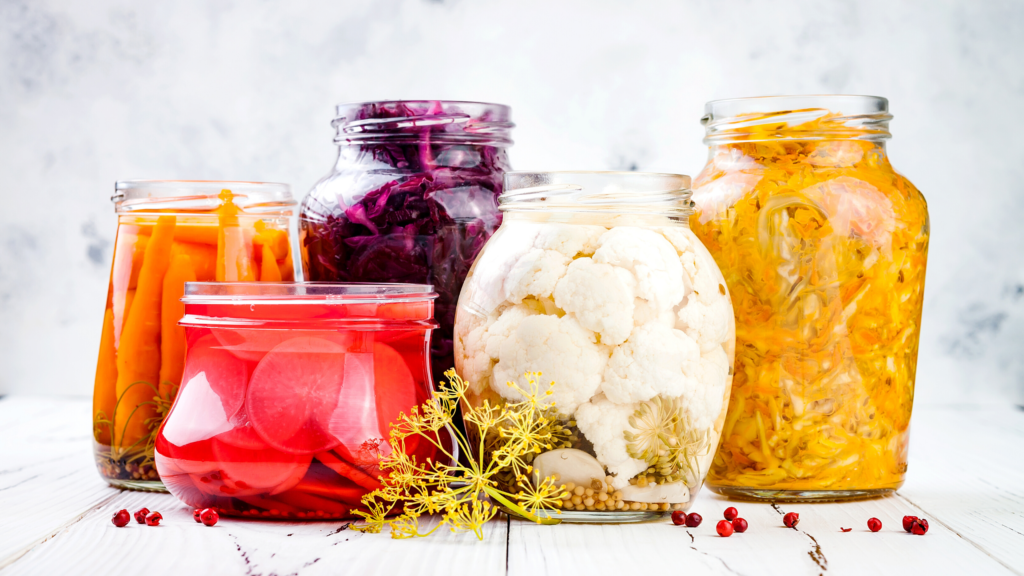Focusing on Whole Food Nutrition
Okay, so now we know what foods to avoid to rebuild your gut health. But what foods should you include?
Fermented Foods
If you have never tried fermented foods before, such as sauerkraut, you will want to take it slow. Properly-made fermented foods can pack quite the punch, and it doesn’t take too much to support your good gut bacteria count.

Some of the most popular sources are: kimchi, kombucha, water or juice kefir, saurkraut,or fermented veggies.
Grass-fed Proteins
When you are breastfeeding, you want to be getting the best source of clean protein as possible. If you are a vegetarian, I would focus on getting local, pasture-raised eggs, which are far richer in nutrients than your typical store-bought eggs.
When you are buying grass-fed meat (even better if it’s local!), you are avoiding the risk of consuming meat that has been raised under the influence of antibiotics.
Beautiful Fats!
I couldn’t sing the praises of healthy fats enough. Having good quality fat in our diet is so important for everything from our skin health, to neurological health.
Having a consistent source of saturated fats (coconut oil), monosaturated fats (avocado), choline (pastured egg yolks), and omega-3’s (salmon) is essential for your baby’s immune system, as well as their nervous system function as they mature.
“Okay, I’ve cut everything out. So, why am I still having symptoms??”
There can be obvious signs of food sensitivities, such as eczema or a rash, but there are some sneakier signs, such as fatigue (and hey, you’re a new mom, so that one is kind of a given!).
But sometimes, there is not any obvious sign we can put our finger on.
This is when it’s time to look into the root causes a little further. One great tool for this that I use in my practice is the MRT (Mediator Release Testing).

The MRT is a blood test that looks at your immune response to 170 different foods or food chemicals. Unlike other tests, the MRT is looking specifically for what is causing the most damage and inflammation within your body.
Just having this information in front of you can be helpful, but sometimes it takes a little more support to tie it all together. I always encourage my clients to follow up their MRT with one-on-one coaching in the form of LEAP. The LEAP protocol establishes the stepping stones for you on what to do next, and what foods you should be eating.
——–
It will take time to heal your gut if you have been in a state of imbalance for some time, so I always tell my clients that patience is a necessary ingredient to the healing process.
Your body knows what it is doing, you just have to let it do it’s thing!
Be the first to comment